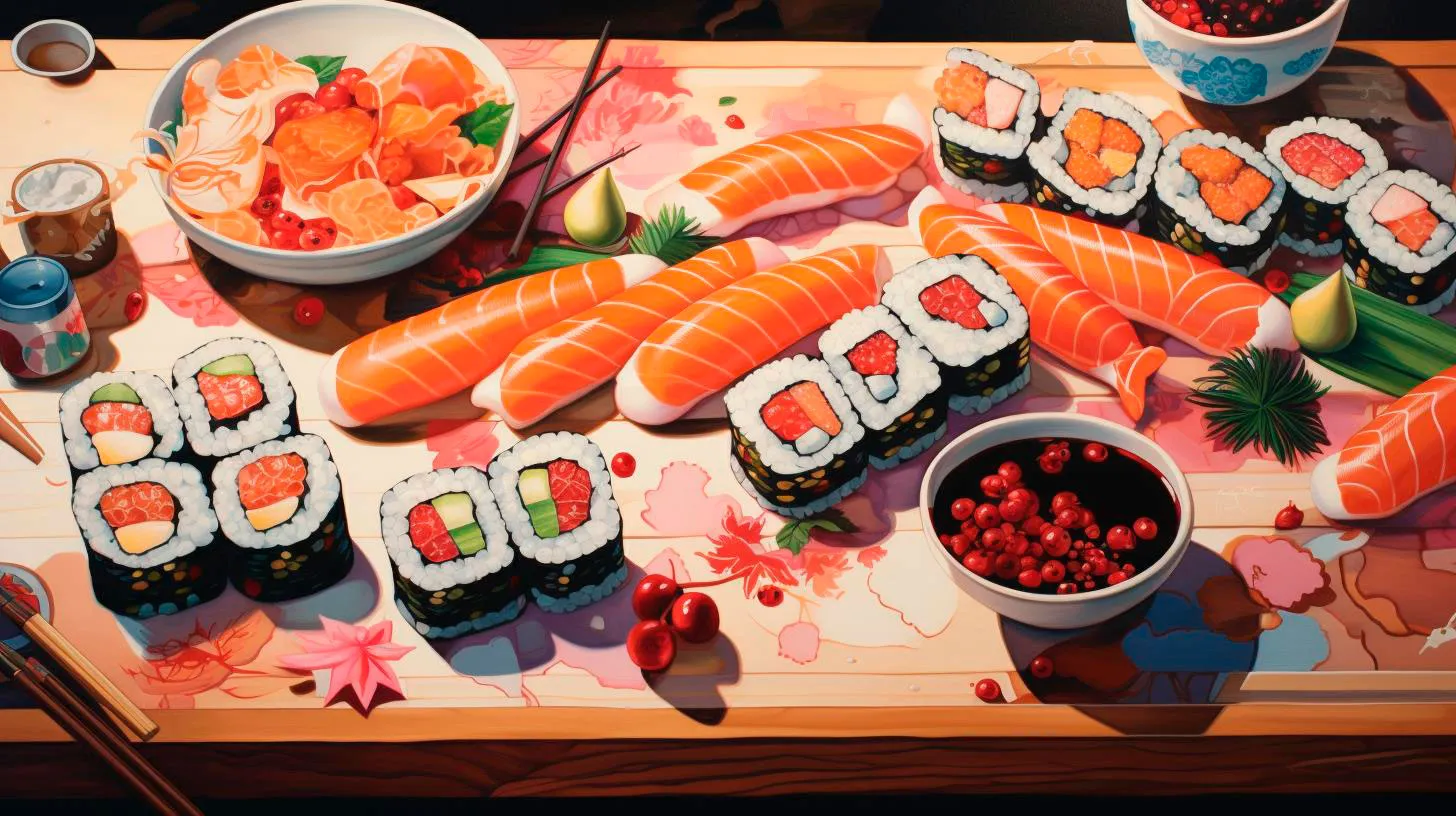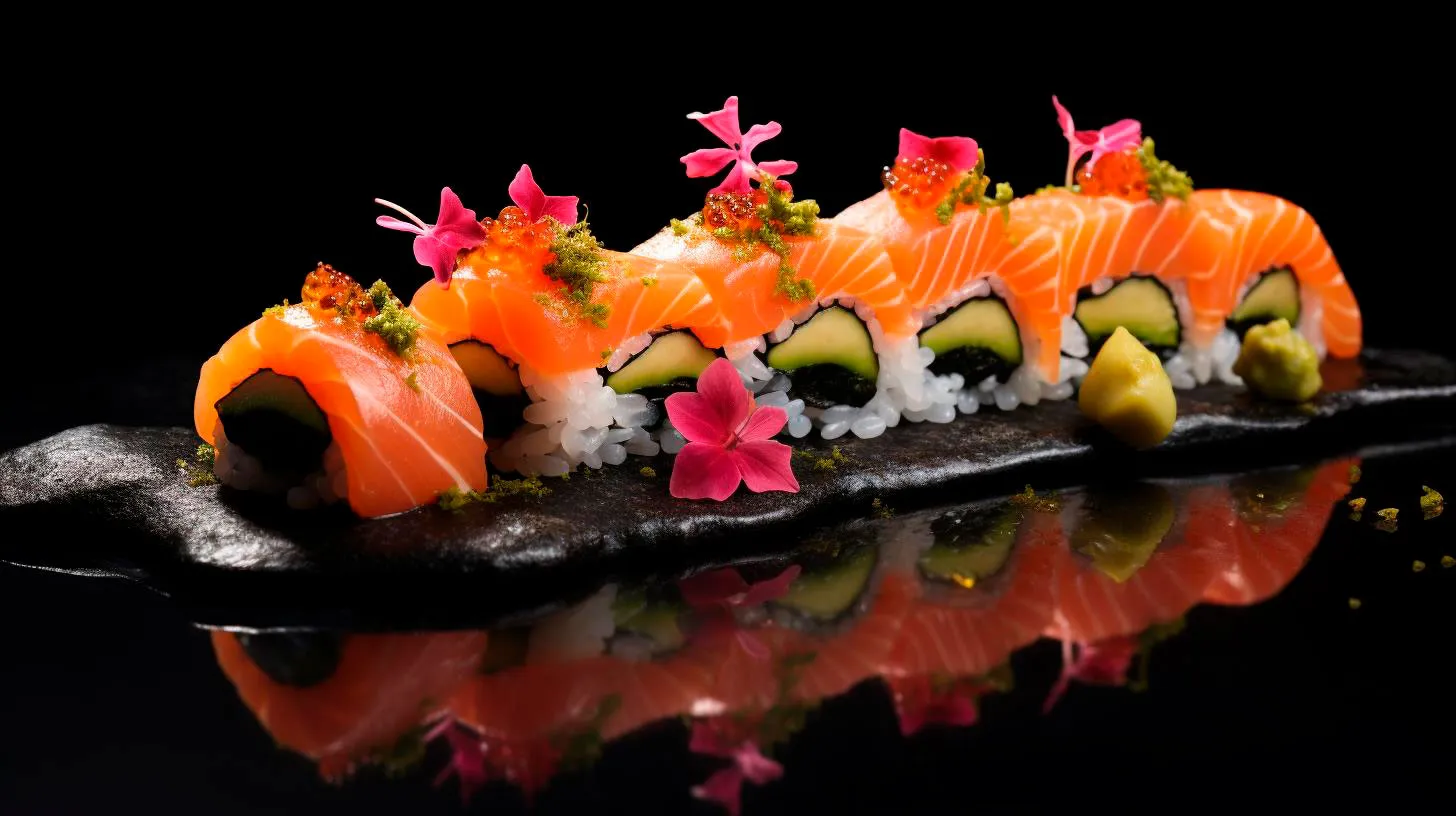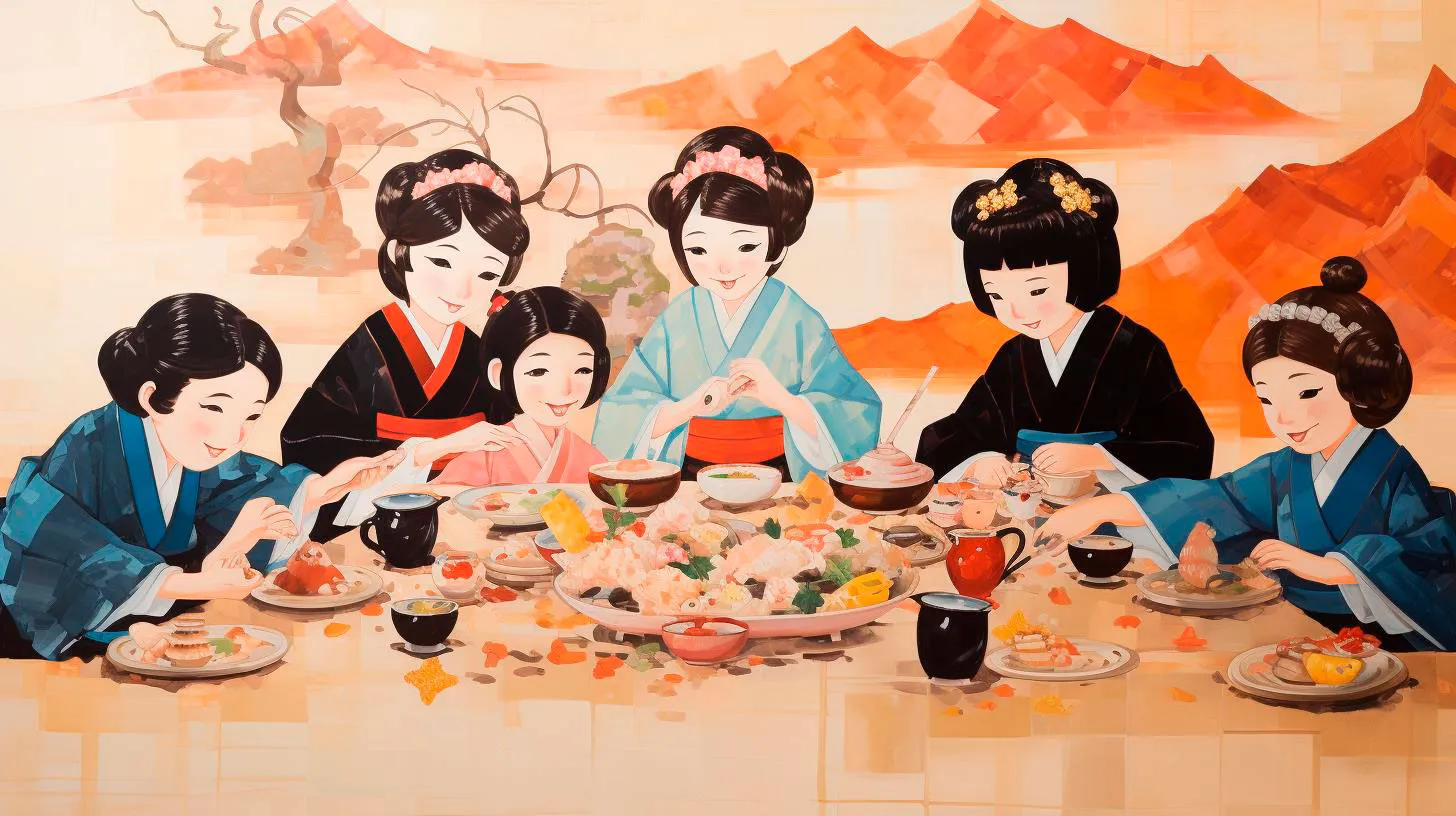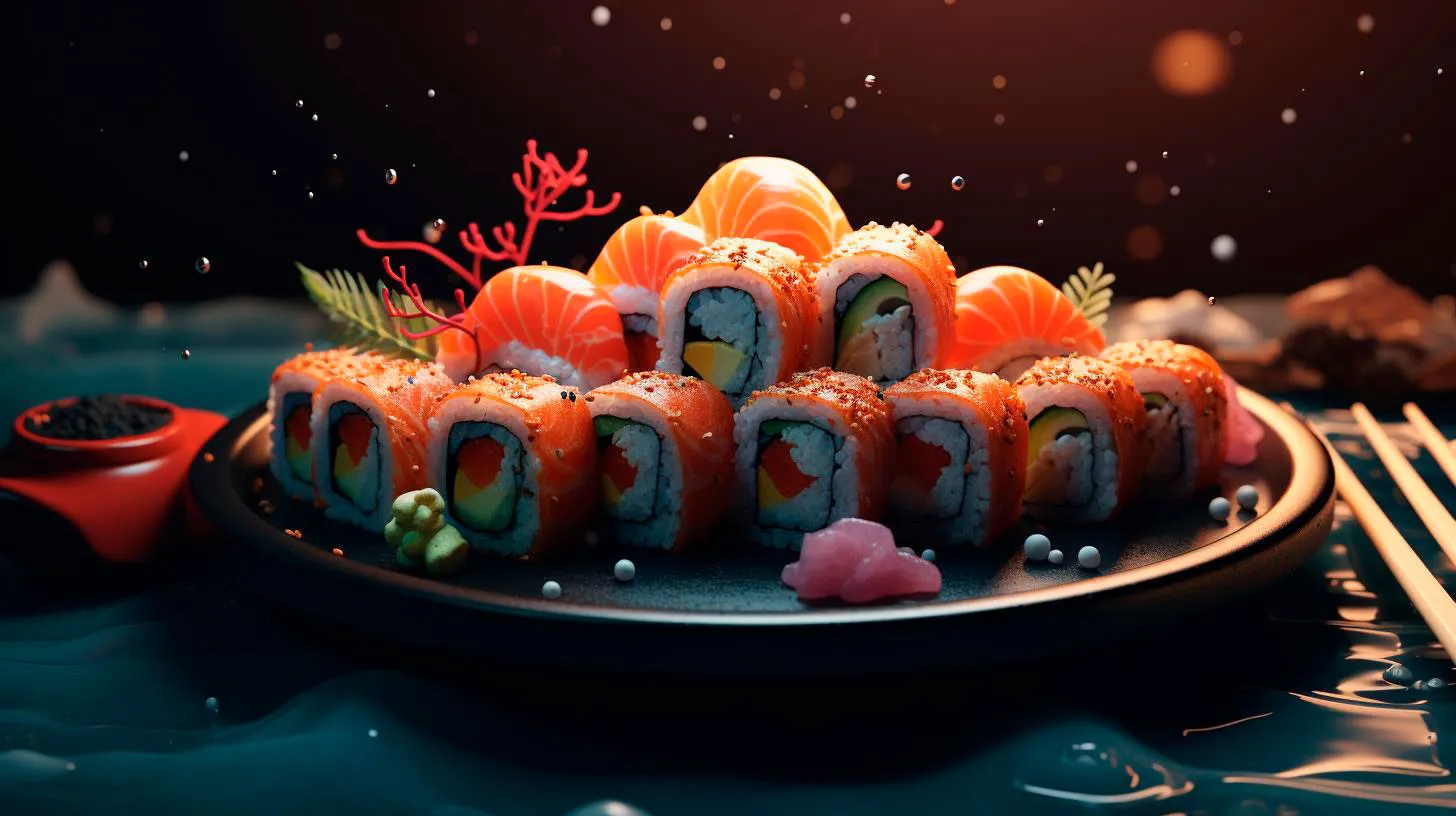Exploring Inland Riches: Sushi’s Cultural Influence across Japan
In this article, we will explore the cultural significance of sushi across inland regions in Japan and its profound impact on the country’s culinary landscape.
The Rise of Sushi in Inland Japan
Historically, sushi has always been linked to coastal cities like Tokyo, Osaka, and Yokohama, where bountiful seafood resources were readily available. However, as Japan modernized and urbanized, sushi chefs ventured into inland regions, adapting their craft to local tastes and ingredients. This migration of sushi culture has led to a fascinating blend of traditional and regional influences, making sushi an integral part of Japan’s culinary fabric, even in areas far from the coastline.
Key Takeaways:
- Sushi has transcended its coastal origins and is now embraced by inland regions in Japan.
- Migration of sushi culture has resulted in unique regional variations.
The Regional Variances of Sushi
As sushi spread across inland Japan, each region incorporated its own local ingredients and culinary traditions, giving rise to unique sushi variations that reflect the local culture and taste preferences.
Osaka: The Birthplace of Modern Sushi
Osaka, known as the nation’s kitchen, played a crucial role in the evolution of sushi. Here, sushi chefs embraced “Oshi-zushi,” a style of sushi that involves compressing rice and toppings together. Osaka’s sushi is characterized by vibrant and colorful toppings, often including local delicacies like sea bream, octopus, and green onion.
Kyoto: A Reflection of Elegance
In the historic city of Kyoto, sushi takes on a more refined and aesthetic form. Known as “Kyo-zushi,” these delicate bite-sized pieces showcase the city’s emphasis on aesthetics and precision. Kyoto’s sushi often features seasonal ingredients, highlighting the city’s traditional and elegant culinary culture.
Nagoya: The Land of Unique Flavors
In Nagoya, the birthplace of “Hitsumabushi” (grilled eel on rice), sushi enthusiasts can indulge in “Nagoya-style sushi.” This variation emphasizes rich, bold flavors and often incorporates unique ingredients like red miso and chopped green onion. Visitors can also enjoy the local specialty “kakinoha-zushi,” where sushi rice is wrapped in persimmon leaves.
Key Takeaways:
- Osaka’s sushi is known for its vibrant toppings and the use of local delicacies.
- Kyoto’s sushi is elegant and showcases the city’s emphasis on aesthetics.
- Nagoya’s sushi offers bold flavors and utilizes unique local ingredients.
Sushi’s Economic Impact
The cultural influence of sushi extends beyond its culinary significance. As sushi became popular across Japan, it sparked an economic boom, driving growth in various sectors.
Statistics show:
- The sushi industry generates an estimated $22 billion in revenue annually in Japan.
- Over 45,000 sushi restaurants exist across the country.
- Sushi exports contribute significantly to Japan’s economy, with the United States being the largest importer.
The economic vitality brought about by sushi not only benefits the restaurant industry but also the fishing sector, agriculture, and tourism. Additionally, it provides numerous employment opportunities in the food and hospitality sectors, stimulating local economies.
The Future of Sushi
As sushi continues to captivate palates around the world, it is poised for further innovation and expansion. The demand for sustainable and eco-friendly practices within the sushi industry has led to the emergence of environmentally conscious sushi restaurants. Chefs are also experimenting with vegan and fusion sushi to cater to evolving tastes.
Key Takeaways:
- The sushi industry generates substantial revenue and has a significant impact on Japan’s economy.
- Sushi plays a vital role in stimulating employment and driving growth in various sectors.
- The future of sushi lies in sustainable practices, vegan options, and fusion cuisine.
In conclusion, sushi’s cultural influence has spread far beyond Japan’s coastal areas, permeating the culinary traditions of inland regions. Through adaptations and variations, sushi has become an essential part of the Japanese food identity, showcasing the country’s diversity and creativity. Whether you find yourself in Osaka, Kyoto, or Nagoya, be sure to explore the unique flavors and experiences each region has to offer through their sushi.
Traditional vs Modern Sushi Evolution in Japan
In this article, we will explore the differences between traditional and modern sushi, and how these adaptations have influenced the way sushi is experienced in Japan.
Traditional Sushi
Traditional sushi, also known as Edo-style sushi, traces its origins back to the bustling streets of Edo (now Tokyo) during the 19th century. This style emphasizes simplicity, highlighting the natural flavors of the ingredients without overpowering them. Key characteristics of traditional sushi include:
- Seasonal Ingredients: Traditional sushi relies heavily on using seasonal fish and seafood, ensuring the freshest flavors and optimal texture. This practice aligns with the Japanese philosophy of “shun,” which emphasizes the enjoyment of food at its peak.
- Shari: The sushi rice, known as shari or sushi-meshi, is a crucial component of traditional sushi. It is seasoned with a delicate blend of rice vinegar, sugar, and salt, giving it a subtle tang that enhances the overall taste of the dish.
- Nigiri-style: Traditional sushi often takes the form of nigiri, which consists of a small mound of sushi rice topped with a slice of fish or seafood. The simplicity of this presentation allows the flavors to shine through.
- Minimalistic Accompaniments: Traditional sushi is typically served with wasabi and soy sauce on the side. The use of soy sauce is minimal, as the chef intends for the flavors to be enjoyed without overpowering them.
These characteristics have been cherished for generations, and many sushi aficionados still seek out traditional sushi for its authenticity and respect for tradition.
Modern Sushi
Over time, sushi has evolved to cater to changing tastes and preferences. Modern sushi, also referred to as fusion or contemporary sushi, incorporates creative twists while still paying homage to its traditional roots. Here are a few notable aspects of modern sushi:
- Innovative Ingredients: Modern sushi pioneers have introduced new ingredients and flavor combinations, expanding the boundaries of sushi. These can include unconventional toppings such as truffle oil, spicy mayonnaise, or even fruit.
- Artistic Presentations: Modern sushi chefs often use presentation techniques that are visually stunning. The delicate arrangement of ingredients or the use of edible flowers and garnishes adds a visually appealing aspect to the overall dining experience.
- Creative Sushi Rolls: In addition to traditional nigiri, modern sushi has popularized the creation of maki rolls. These rolls feature a variety of fillings wrapped in seaweed and rice, allowing for an endless array of flavor combinations and textures.
- Global Influences: With the rise of globalization, sushi has borrowed flavors and techniques from different culinary traditions, resulting in unique fusion creations. This cross-cultural exchange has contributed to the modernization of sushi.
The advent of modern sushi has sparked debates among purists, who argue for the preservation of tradition, and enthusiasts who embrace the innovative and creative aspects. While traditional sushi remains beloved, modern sushi has brought a new wave of excitement and experimentation to the culinary scene.
Key Takeaways
- Traditional sushi, also known as Edo-style sushi, emphasizes simplicity and the use of seasonal ingredients.
- Modern sushi incorporates new flavors, innovative ingredients, and artistic presentations while still honoring traditional roots.
- Traditional sushi is often presented as nigiri, while modern sushi introduces creative rolls and fusion creations.
- The rise of global influences has contributed to the modernization of sushi.
- Both traditional and modern sushi have their own unique merits and offer diverse dining experiences.
As sushi continues to evolve, Japan’s culinary heritage remains at its core. Whether you prefer the purity and simplicity of traditional sushi or the creativity and innovation of modern sushi, both styles offer incredible flavors and a glimpse into the rich tapestry of Japanese cuisine.
Coastal Delicacies: Sushi Specialties from Oceanic Regions
Get ready to tantalize your taste buds!
Sushi: A Global Phenomenon
Sushi, a traditional Japanese dish, has been enjoyed for centuries. Over time, it has evolved and taken on new forms to cater to diverse palates. Today, it has become a global phenomenon, capturing the hearts of food enthusiasts from all walks of life. From sleek sushi bars in Tokyo to trendy restaurants in Los Angeles, sushi has become a staple in many international food scenes.
Oceanic Regions: A Seafood Haven
Coastal regions around the world boast an abundance of fresh seafood, making them ideal for developing unique sushi specialties. Let’s dive into some of the sushi delights from oceanic regions that will transport you to a seafood lover’s paradise:
1. Hokkaido, Japan – Uni (Sea Urchin) Nigiri
Hokkaido, the northernmost island of Japan, is known for its pristine waters and rich marine life. Here, you will find the finest uni (sea urchin) nigiri, a delicacy cherished by sushi aficionados. The sweetness of fresh uni paired with perfectly seasoned rice creates a heavenly combination that melts in your mouth.
Key Takeaway: Uni nigiri from Hokkaido is a must-try for sushi lovers seeking an exquisite and luxurious taste experience.
2. California, United States – California Roll
The California roll, created in the 1960s in Los Angeles, revolutionized sushi by introducing the concept of “inside-out” rolls. Made with avocado, crab meat, and cucumber, it was designed to cater to the Western palate. Today, it has gained worldwide popularity and has become a sushi staple.
Key Takeaway: The California roll offers a familiar taste while introducing sushi novices to the world of Japanese cuisine.
3. Busan, South Korea – Gimbap
In Busan, South Korea’s vibrant coastal city, gimbap takes center stage as the local favorite. Gimbap is often referred to as “Korean sushi” due to its similarities with Japanese sushi rolls. Seaweed is wrapped around a variety of fillings, including pickled radish, egg, and cooked vegetables. This delectable dish is perfect for a quick and satisfying snack.
Key Takeaway: Gimbap offers a fusion of flavors, showcasing the unique culinary heritage of South Korea’s coastal regions.
4. Lima, Peru – Nikkei Sushi
Peruvian cuisine is renowned for its fusion of flavors, and Lima, the culinary capital of Peru, leads the way in Nikkei cuisine. Nikkei sushi combines traditional Japanese sushi with Peruvian ingredients and cooking techniques. It offers a vibrant mix of flavors, with seafood such as tuna, octopus, and shrimp paired with tangy sauces and exotic spices.
Key Takeaway: Nikkei sushi brings together the best of Japanese and Peruvian culinary traditions, creating a bold and exciting taste experience.
The Health Benefits of Sushi
Beyond its exquisite flavors, sushi also offers various health benefits:
- Sushi is rich in omega-3 fatty acids, which are essential for heart health.
- Seaweed used in sushi is packed with vitamins, minerals, and antioxidants.
- Raw fish in sushi provides a high-quality source of protein.
- Sushi can be a low-calorie option when choosing lean fish or vegetable-based rolls.
Final Thoughts
Coastal regions around the world offer a diverse range of sushi specialties, each with its own unique twist. From the delicate sweetness of uni nigiri in Hokkaido to the flavorful fusion of Nikkei sushi in Lima, the possibilities are endless. Whether you are a seasoned sushi lover or a curious beginner, exploring these oceanic sushi delights is a journey worth embarking on. So, dive in and indulge in the coastal delicacies that await you!
Unearthing Hidden Treasures: Lesser-Known Sushi Delights
However, beneath the surface, there are lesser-known sushi delights waiting to be discovered. In this article, we will delve into the hidden treasures of sushi, revealing some lesser-known delicacies that are sure to delight sushi enthusiasts.
Anago (Saltwater Eel)
While unagi (freshwater eel) sushi is reasonably well-known, its saltwater counterpart, anago, often goes unnoticed. Anago is a lighter and more delicate alternative to unagi. Its succulent flesh, brushed with a sweet soy glaze, offers a melt-in-your-mouth experience that sushi connoisseurs should not miss.
- Feature: Anago is low in fat, making it a healthier choice.
- Advantage: Its milder flavor makes anago appealing to those who find unagi too rich.
- Key Takeaway: Expand your sushi horizons by trying anago and discover a new favorite.
Ikura (Salmon Roe)
When it comes to sushi, salmon is a classic choice. However, the roe of salmon, known as ikura, often goes underappreciated. These vibrant orange pearls burst with a unique blend of savory and briny flavors. The delightful textural contrast between the firm roe and the tender rice creates a satisfying bite that is simply irresistible.
- Feature: Ikura is packed with omega-3 fatty acids, promoting heart health.
- Advantage: The burst of flavor from the roe adds an exciting element to the sushi experience.
- Key Takeaway: Treat yourself to the delightful explosion of flavors offered by ikura sushi rolls.
Hokkigai (Surf Clam)
While many sushi lovers are familiar with staples like tuna and salmon, the delicate and slightly sweet flavor of hokkigai, or surf clam, remains relatively unknown. Its vibrant pink hue and firm texture make it a visually striking addition to any sushi platter. Whether enjoyed on its own or in a sushi roll, hokkigai is a treasure waiting to be unearthed.
- Feature: Hokkigai is a good source of iron and protein, promoting overall health.
- Advantage: Its unique taste and texture set hokkigai apart from more commonly consumed seafood.
- Key Takeaway: Step outside your comfort zone and savor the subtle flavors of hokkigai sushi.
Aji (Horse Mackerel)
Although aji, or horse mackerel, might not be the first choice for sushi enthusiasts, this underrated fish deserves recognition. With its distinct, slightly oily flavor, aji offers a taste that stands out from the crowd. The silvery skin and tender flesh of aji make it an excellent addition to a traditional sushi platter.
- Feature: Aji is rich in omega-3 fatty acids and essential minerals.
- Advantage: Its unique flavor profile adds diversity to your sushi experience.
- Key Takeaway: Embrace the lesser-known fish and indulge in the culinary pleasure of aji sushi.
In Conclusion
Sushi is a culinary art that continues to evolve, offering a multitude of flavors for everyone to explore. While more popular options like salmon and tuna always have their place, it is equally important to seek out the hidden treasures that sushi has to offer. Anago, ikura, hokkigai, and aji are just a few examples of the lesser-known sushi delights waiting to be discovered.
Expand your sushi repertoire and embark on a journey to uncover these hidden treasures. With their unique tastes, health benefits, and captivating appearances, these sushi delicacies are bound to leave a lasting impression. So, the next time you visit your favorite sushi restaurant, let your curiosity guide you towards these secret delights and enjoy a truly remarkable sushi experience.



